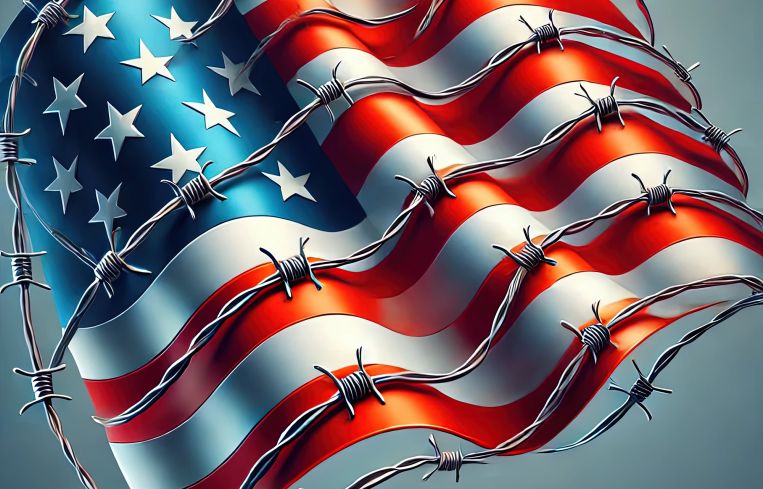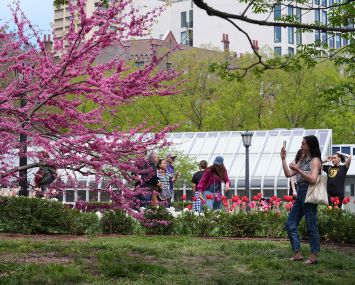New York Hotels Sweat Losing International Travelers Soured On the U.S.
The industry had been posting strong recovery numbers post-pandemic amid a general resurgence in tourism. Then came '51st state' etc.
By Patrick Sisson March 31, 2025 10:45 am
reprints
International travelers may be considering a new America-less itinerary that could harm the hotel industry.
Policy shifts, especially steeper tariffs, as well as the arrests of green card and visa holders and just blunter diplomacy have made many international travelers nonplussed and anxious about the idea of travel to the United States. It’s a growing sentiment even in places like longtime ally Canada, where repeated refrains of “51st State” and references to the nation’s “governor” instead of “prime minister” from U.S. officials have helped crater travel demand from a nation that generates about $20.5 billion in annual spending in the U.S.
According to a recent study of Canadian flight bookings, advanced bookings have shrunk more than 70 percent compared to the same time last year, and members of the National Tour Association, which organizes U.S. trips for Canadians, said the dropoff in bookings has been “astronomical.” Tourism Economics projects 15 percent fewer Canadians will cross the border for travel this year.
Factor in travel bans the U.S. has considered applying to dozens of countries, as well as new travel warnings that have come from countries such as the United Kingdom, Germany and Canada — the latter of which had a citizen, actress Jasmine Mooney, end up in ICE detention for nearly two weeks due to a visa misunderstanding — and there’s a sense that tourists may think twice about visiting the U.S.
Fear of a sudden exodus of international travelers this year could have a significant impact on hotel and hospitality in New York City in particular. It’s the nation’s top urban tourist destination, where international travel represented nearly 20 percent of the 62.2 million visitors that came to the city in 2023.
“It’s not good, obviously,” said Vijay Dandapani, president and CEO of the Hotel Association of New York City. “As yet, we in New York City haven’t felt it in any significant way. Nothing material yet.”
Dandapani said that the uncertainty around what’s happening — and why certain travelers and visa holders have been detained — has led to fear, which is bad for business. U.S. officials have always had the discretion, for instance, to tell a foreign traveler with an ESTA visa for a longer-term stay that they don’t qualify to enter the U.S. But these recent instances of detentions of international travelers have been magnified in the media in a way that hasn’t happened before.
“Single cases are like a plane crash,” Dandapani said. “A single plane crash doesn’t stop all flying. But, on the other hand, a single incident tends to scare people.”
These travel and tourism challenges come just as New York City’s hotel market was pivoting from the pandemic. This year, the city will lead the nation in openings, with 5,719 projected new rooms, after leading the nation in occupancy in 2023 and 2024. Last year, New York City welcomed 65 million visitors, and its hotel industry achieved 8.4 percent revenue per available room (RevPAR), a leading industry metric, second in the nation behind Houston.
Earlier this year, Zach Demuth, JLL’s global head of hotel research, said growth in urban markets like New York would be “exceptionally strong” off the resurgence of group, corporate and international travel. And a research brief by consultancy MMCG Invest in January found that while international travel remained below pre-pandemic levels, it was on an upswing, as evidenced by increased arrivals at Newark and John F. Kennedy airports in particular. The recovery signaled “potential growth opportunities, especially as exchange rates and international sentiment toward the U.S. economy stabilize,” according to the brief.
CBRE’s recent Global Hotel Outlook for 2025 noted that New York was seeing record room rates due to its Airbnb restrictions enacted in 2023, and RevPAR growth would be healthy in the medium term, barring a recession. The authors of the outlook, however, did have this caveat: “[A]ssuming no disruptive public policy changes and a relatively stable dollar, we expect markets with strong business and leisure appeal and modest supply growth to outperform.”
That disruptive policy change may have arrived. A study by Tourism Economics predicts that U.S. hospitality-focused businesses could lose up to $64 billion due to trade wars sparked by the Trump tariffs. That includes an $18 billion loss from a predicted 11 percent drop in foreign travel. The dropoff in incoming tourists could be so steep that it impacts prices enough to depress domestic travel as well.
There hasn’t been any change to U.S. RevPAR forecasts for 2025 yet, according to Jan Freitag, national director for hospitality market analytics at CoStar. But it has created lots of anxiety overseas. It’s true that New York City’s travel market has been buoyed mostly by domestic and convention travel, with international tourism serving as the “icing on the cake,” according to Freitag. But any sense that the U.S. isn’t as safe or as reliable a destination as it once was will damage travel bookings, especially for big international events.
“A German father thinking of bringing his kids over for the World Cup is going to ask, ‘What does it look like if I get stopped at the border or have visa issues?’ ” Freitag said.
The loss of international travelers — which may not fully be reflected in hotel numbers and tourist spending for months — would sting. Dandapani said foreign visitors tend to spend four times the amount of domestic travelers and stay longer. Recent research released by Tourism Economics and NYC Tourism & Conventions, the city’s tourism wing, estimates that visitor spending in New York supports 60 to 65 percent of local jobs in the arts and entertainment, 30 to 35 percent of those in dining and bars, and just over 5 percent in retail.
New York City, the report continued, remained a top international destination coming out of the pandemic. What that means in an era of travel uncertainty remains to be seen.


